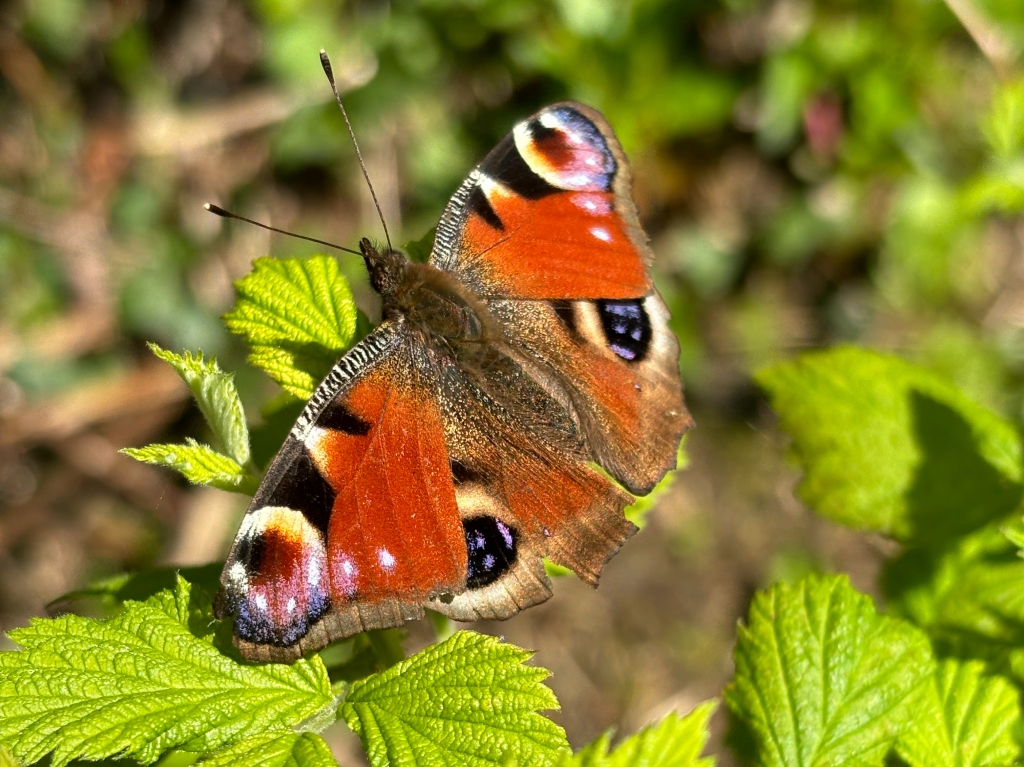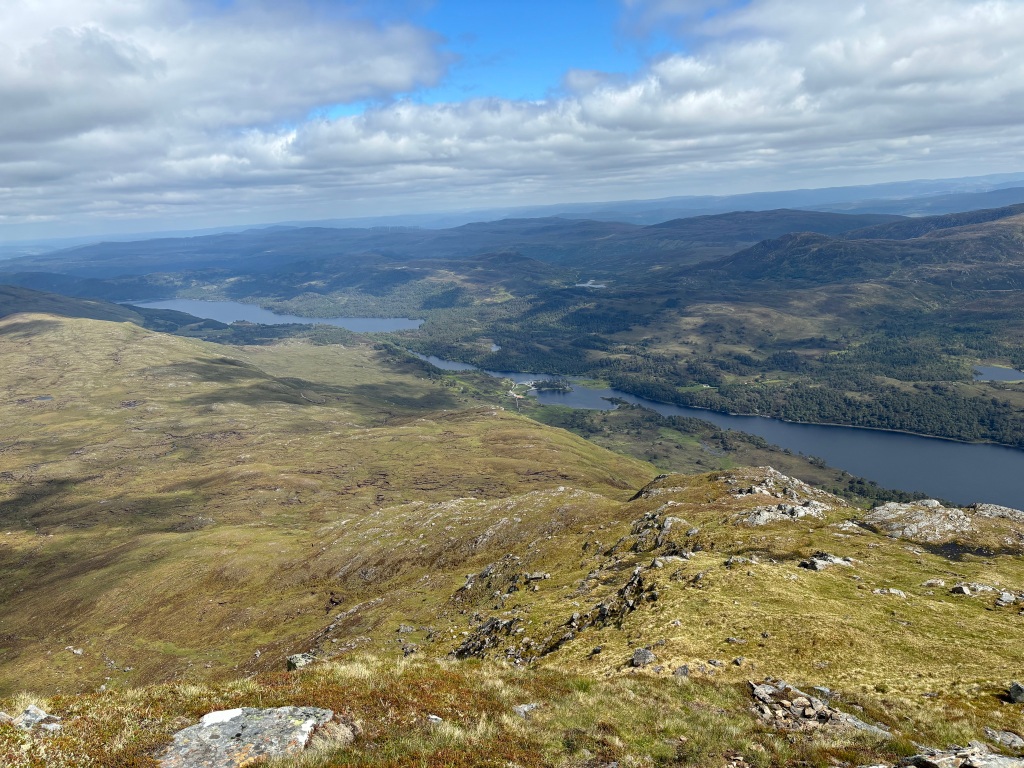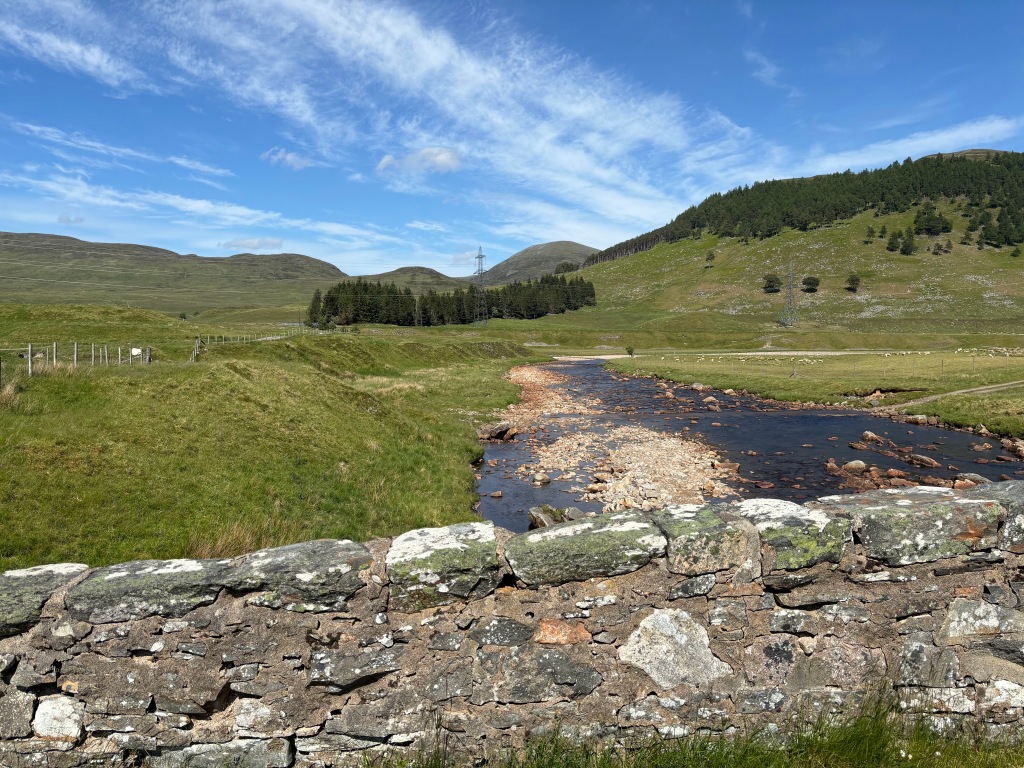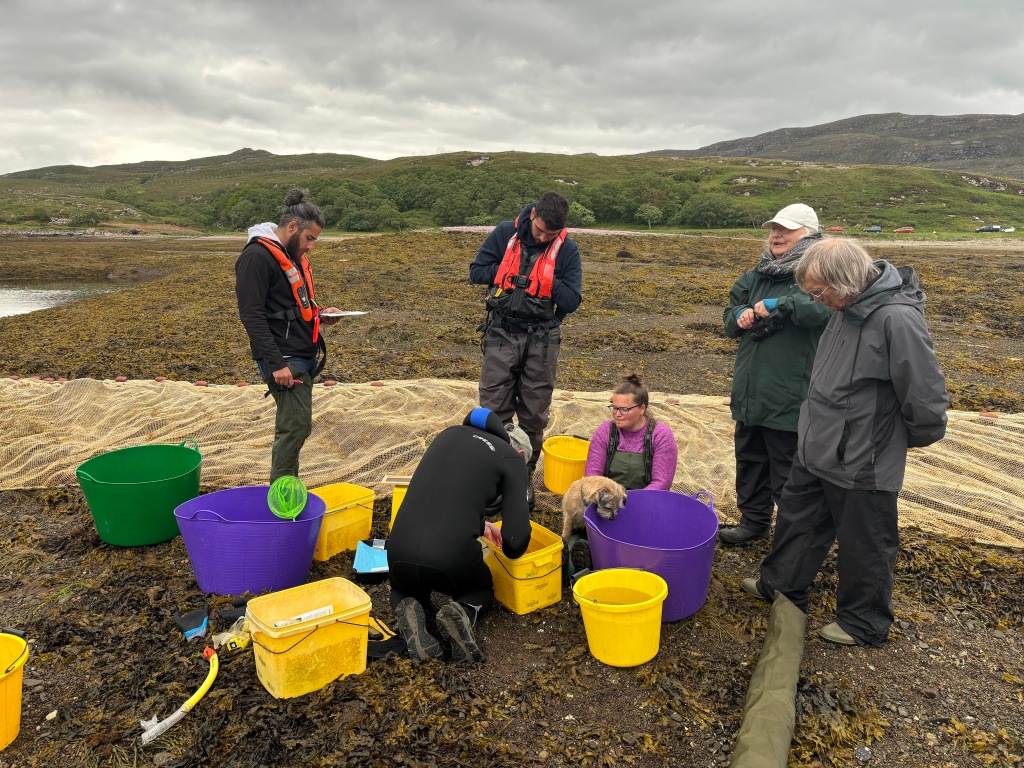When planning this sabbatical, one of my key targets was to do something that would bring benefit to the school. I had already envisioned that I could create series of lessons for STEM classes, perhaps using the Merlin app to identify birds in Easter Craiglockhart hill, and chart population changes throughout a term, or something of that nature.
With this in mind, on a bright and sunny Wednesday afternoon last week, I met with Jim Heath, current chair of Friends of Easter Craiglockhart hill, to gain his insights and thoughts on the hill. Quite frankly, he was inspirational and the whole afternoon with him was transformational to my understanding of the need to improve biodiversity in our city, and changed my thoughts about what the content of the STEM lessons could be.
What is beautiful?
One of the first things we discussed was the idea of what we perceive as beautiful in nature. As we walked around the hill, I noted areas of trimmed grassy meadow, particularly around Craighouse, but also the golf course that extends south of the hill, as seen in the map below.

Jim’s view is that these areas are like a desert for wildlife, which needs disorder rather than order to thrive. Is it possible that we’ve been trained from a very early age to view neat verges and well kept gardens as beautiful, and untamed wilderness areas as ugly and greatly in need of management? Perhaps the truth is somewhere in between.
As we approached a viewpoint from which we could see across the city, he highlighted his main concern. For this I will steal some satellite imagery from Apple maps…feel free to pan and zoom around.
At this stage we were deep into conversations about bees and butterflies, and how due to loss of biodiversity and wild places in the city (and indeed the whole of the UK), numbers have been dropping for years. Jim explained to me that ecosystems must begin with bugs, creepy crawly things, and of course bees and butterflies. If those things are provided for, then birds and larger wildlife will also come and thrive.
Wildlife corridors
The problem is this – “wildlife corridors” across the city are few and highly restricted. He told me about a certain species of butterfly that is only found in Holyrood park. I cannot remember which one he said, but details in this link to the Historic Environment Scotland website suggests it may be the Plume Moth or Northern Brown Argus butterfly. Either way, the reason why it has not traversed across to Easter Craiglockhart Hill is likely because there are an insufficient number of wildlife corridors. As you can see by panning the map around, even getting from Blackford Hill to Easter Craiglockhart Hill would be a struggle – bees and butterflies need coffee stops along the way – plants they can feed off to make such a journey possible. This journey is blocked by the golf course south of the hill, and quite possibly, by trimmed verges around my own school’s rugby pitches to the north.
And so therein seems a very credible project. Instead of listening for birds on an app, could we instead record bee and butterfly sightings. Best bee or butterfly photo would appeal to the competitive, and there is lots to do in the classroom after a visit relating to identifying species of bees or butterflies, recording data and plotting graphs. In fact, there are national bee and butterfly recording schemes that we could feed into. We could be involved in creating more wild spaces (two separate links) in the school grounds, and if possible, even encourage the grounds staff not to trim the verges around the pitches. It would be fascinating to complete a survey over a number of years and actually see growth in numbers of these insects on our campus!
We are not alone!
So this is all very exciting, and importantly, achievable. I feel I have a lot to get my head around in terms of the possibilities. After a brief conversation about these things yesterday at church, I’ve arranged a meeting with Charlie Cumming, Chief Executive of the Edinburgh and Lothians Greenspace Trust, who no doubt has lots of insights and contacts in the city. Thankfully, the Edinburgh Council have a plan, called the EDINBURGH BIODIVERSITY ACTION PLAN 2022 -2027 (link to pdf). Given we are half way through this time period, it would be interesting to find out how much of the plan has been completed! Part of this plan involves mapping out all of Edinburgh’s green (trees and parks) and blue (rivers and wetland) networks – this ties in very much with the idea of wildlife corridors above.
Why bother?
Increasing biodiversity is a huge task. Jim told me about how some species of butterflies require four different plants just to exist – one plant for the eggs to be laid on, one for the caterpillar to eat, a different one for the chrysalis, and a different one again for the butterfly to feed from. Biodiversity means just that – having a diverse enough range of habitats for species to thrive. Bees and butterflies play a crucial role in the food chain and are pollinators of plants, which makes them essential to humans too. We should bother because we as humans need bees and butterflies. But equally, they have been around for a very long time and it is our responsibility to protect their existence.
Photographs
Well, I guess you came here expecting photos too, so here are a collection of pictures I took last Wednesday, including on the cycle home along the canal.







Jim sent me over a couple of videos of the larger wildlife on the hill – these videos were taken the night before my walk on the hill.
Plans for this week?
I’ve used this post to gather my thoughts on plans for my return to school next year. But there is lots still to consider. I hope to take more walks on the hill this week, and do more wildlife spotting. Hopefully a meet up with Charlie is on the cards too.
Next week I’m off to Gairloch to spend time with Peter Cunningham. I’m very excited about what I will learn with him. Perhaps my thoughts and ideas will change again…who knows!









Leave a comment